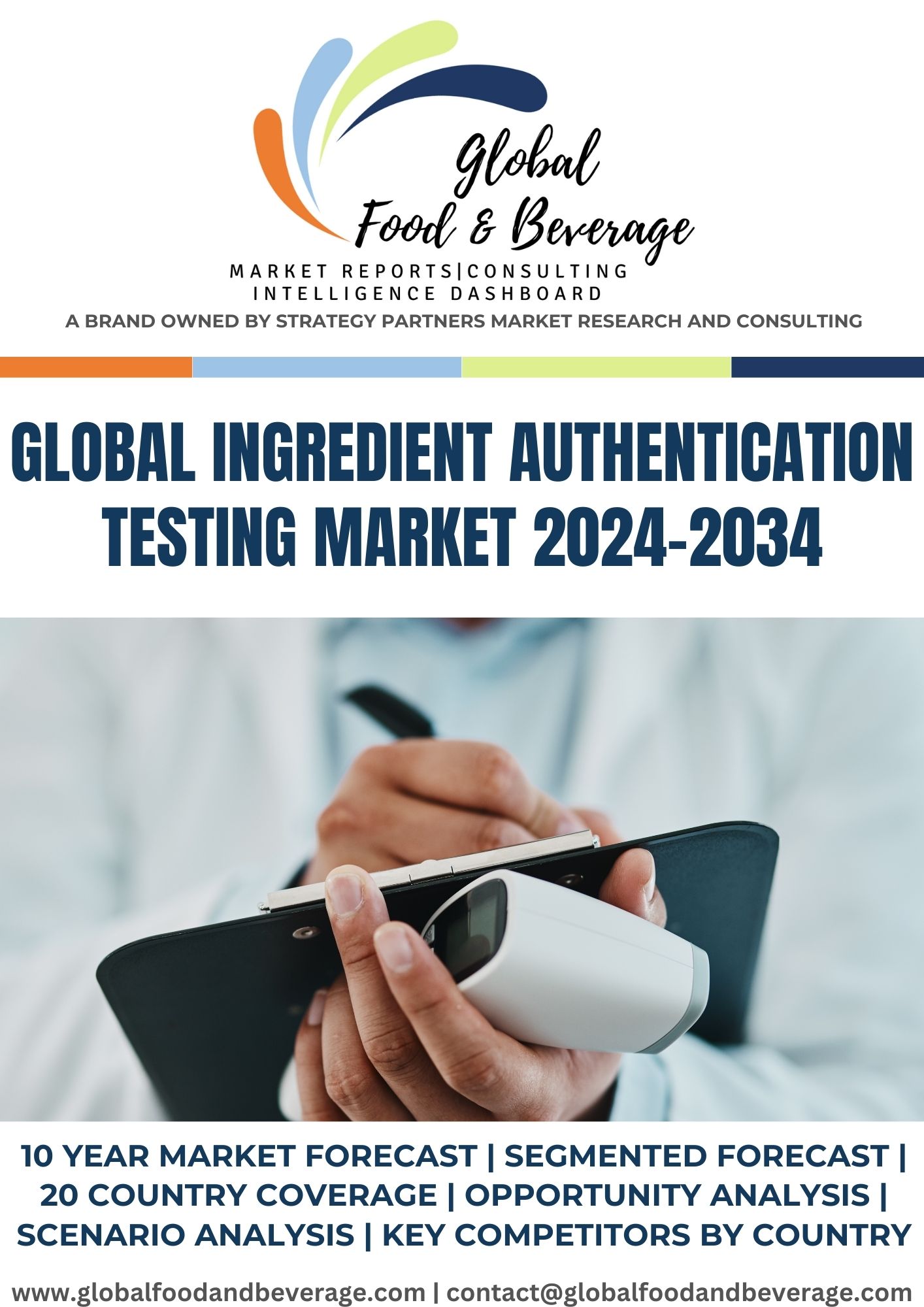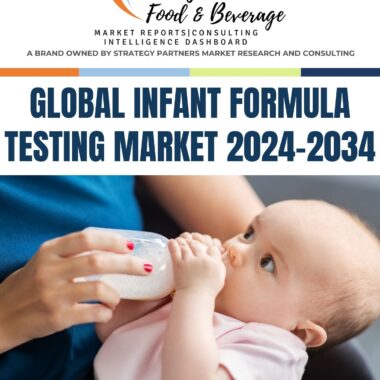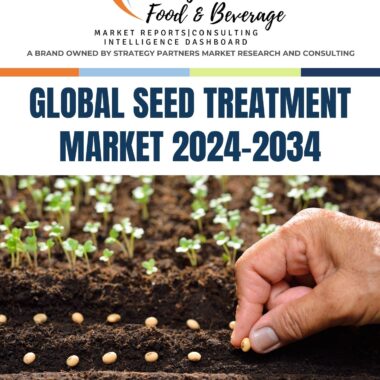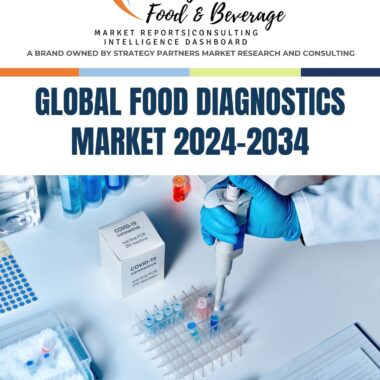Description
Ingredient authentication testing is a critical process in the food and beverage industry, as well as in various other sectors where the authenticity and quality of ingredients are paramount. This type of testing involves the analysis of raw materials and components to verify their origin, quality, and compliance with regulatory standards. The significance of ingredient authentication testing is reflected in its role in ensuring consumer safety, protecting brand reputation, and supporting fair trade practices.
One of the primary objectives of ingredient authentication testing is to safeguard consumer health and trust. With the globalization of the food supply chain, ingredients are sourced from various regions around the world. Authenticating these ingredients is essential to ensure that they meet safety and quality standards and do not pose health risks. This is particularly important in preventing food fraud, where inferior or harmful ingredients may be substituted for genuine ones, endangering public health.
For example, the adulteration of spices and herbs is a common issue in the food industry. Ingredient authentication testing can identify the presence of undeclared or substituted ingredients in spice blends, such as ground nuts, which can be harmful to individuals with allergies. In the case of saffron, one of the world’s most expensive spices, adulteration with cheaper substitutes is widespread. Ingredient testing is used to verify the authenticity of saffron, ensuring that consumers get what they pay for.
The quality and authenticity of ingredients are vital in maintaining brand reputation. Companies that rely on specific, high-quality ingredients to differentiate their products need to ensure that these ingredients meet the expected standards. Ingredient authentication testing is an essential tool for companies that produce premium or specialty food items, such as organic, gluten-free, or ethically sourced products.
In the wine industry, for instance, the region and grape variety from which the grapes are sourced significantly affect the wine’s characteristics and value. To maintain the authenticity of wine labels and protect the reputation of wineries, ingredient authentication testing is used to verify the origin of the grapes and ensure that the wine’s characteristics align with the declared appellation of origin.
Moreover, ingredient authentication testing is critical in supporting fair trade practices and protecting the interests of farmers and producers. In many regions, specific products like coffee, tea, and cocoa are marketed as fair trade, meaning they are produced under ethical conditions and traded in a manner that benefits the growers and their communities. Ingredient testing helps verify the authenticity of fair trade products, ensuring that consumers are indeed purchasing items that adhere to the principles of fair trade and support sustainable agriculture.
In the context of dietary preferences and restrictions, ingredient authentication testing is invaluable. Many individuals have specific dietary needs, such as those following vegetarian, vegan, or halal diets. Ingredient testing ensures that food products comply with these dietary requirements, helping consumers make informed choices that align with their values and dietary restrictions. For example, testing can confirm the absence of animal-derived ingredients in products labeled as vegan, or verify the adherence to halal standards in foods intended for Muslim consumers.
Another area where ingredient authentication testing is of great importance is allergen management. Food allergies and intolerances affect a significant portion of the population, and accidental exposure to allergens can have severe consequences. To protect individuals with food allergies, testing is used to detect and quantify allergenic ingredients in food products. This information is crucial for labeling and informs consumers about potential allergen risks, enabling them to make safe food choices.
The detection of contaminants, toxins, and chemical residues in ingredients is a fundamental aspect of ingredient authentication testing. Contaminants like pesticides, heavy metals, and mycotoxins can find their way into ingredients during cultivation, harvesting, or processing. Testing is employed to ensure that ingredient levels of these substances are within permissible limits and do not pose health risks to consumers.
Furthermore, ingredient authentication testing supports sustainability efforts in the food industry. Sustainable sourcing of ingredients, such as seafood, is a growing concern in the context of overfishing and environmental impact. Testing helps verify the sustainability of ingredients, providing consumers with information on whether a product adheres to environmentally responsible practices, such as those set by certification organizations like the Marine Stewardship Council (MSC).
The use of genetically modified organisms (GMOs) in food production is another area where ingredient authentication testing is pivotal. Some consumers seek to avoid GMOs for various reasons, and ingredient testing helps determine whether GMO ingredients are present in food products. This information allows consumers to make informed choices based on their preferences regarding genetically modified organisms.
In the context of the pharmaceutical and healthcare industries, ingredient authentication testing is crucial to verify the identity and quality of active pharmaceutical ingredients (APIs) in medications. Ensuring the authenticity and quality of APIs is essential to guarantee the safety and effectiveness of drugs. Testing is used to confirm the identity of the API, its purity, and compliance with regulatory standards, assuring that patients receive the intended treatment.
Food fraud is a significant concern in the industry, with instances of adulteration, substitution, and mislabeling being prevalent. Ingredient authentication testing is a powerful tool in combating food fraud. For example, in the fish industry, where the mislabeling of lower-value species as higher-value ones is common, DNA testing can confirm the identity of fish species, ensuring that consumers receive the fish they expect and pay for.
The olive oil industry is another sector where ingredient authentication testing is indispensable. Olive oil is often adulterated with cheaper oils like sunflower or canola oil, diluting the quality and authenticity of the product. Testing methods, such as gas chromatography, can determine the fatty acid composition and authenticity of olive oil, allowing consumers to distinguish between pure olive oil and adulterated versions.
Supply chain traceability is a key component of ingredient authentication testing. The ability to trace the source and journey of ingredients through the supply chain is vital in ensuring authenticity and safety. Technologies like blockchain have made it easier to track the origin of ingredients, providing transparency to consumers and enabling rapid identification of issues or recalls when they arise.
In the context of international trade, ingredient authentication testing supports regulatory compliance and the prevention of trade disputes. Different countries have specific regulations and standards for ingredients, and ingredient testing is crucial in demonstrating compliance with these requirements. This ensures that products meet the standards of the importing country and facilitates international trade.
In summary, ingredient authentication testing is a critical process in various industries, including food, pharmaceuticals, and healthcare. It serves multiple essential functions, including safeguarding consumer health, protecting brand reputation, supporting fair trade practices, and ensuring the compliance of ingredients with dietary preferences and restrictions. This type of testing plays a pivotal role in combating food fraud, managing allergens, and promoting sustainability, as well as supporting supply chain traceability and international trade compliance. In an era of increasing awareness and concern regarding the authenticity and quality of ingredients, ingredient authentication testing is indispensable in maintaining consumer confidence and safety.
Table of Content
1 Market Introduction- Global Ingredient Authentication Testing Market
1.1 Market Segmentation- Global Ingredient Authentication Testing Market
1.2 Key Trends- Global Ingredient Authentication Testing Market
1.2.1 Drivers
1.2.2 Restraints
1.2.3 Challenges
2 Global Market Forecast- Global Ingredient Authentication Testing Market
2.1.1 By Region
2.1.2 By Ingredient source
2.1.3 By Technology
3 Country Wise Forecast- Global Ingredient Authentication Testing Market
3.1 US
3.1.1 Key Trends
3.1.2 Consumer Spending
o Population
o GDP
o CPI
o Spend per Capita
o Spend as a proportion of GDP
3.1.3 Market Forecast- US Ingredient Authentication Testing Market
o By Ingredient source
o By Technology
3.1.4 Key Competitors- US Ingredient Authentication Testing Market
3.1.5 EXIM
3.1.6 Patents
3.1.7 Scenario Analysis- US Ingredient Authentication Testing Market
3.1.8 Opportunity Analysis- US Ingredient Authentication Testing Market
3.2 Canada
3.2.1 Key Trends
3.2.2 Consumer Spending
o Population
o GDP
o CPI
o Spend per Capita
o Spend as a proportion of GDP
3.2.3 Market Forecast- Canada Ingredient Authentication Testing Market
o By Ingredient source
o By Technology
3.2.4 Key Competitors- Canada Ingredient Authentication Testing Market
3.2.5 EXIM
3.2.6 Patents
3.2.7 Scenario Analysis- Canada Ingredient Authentication Testing Market
3.2.8 Opportunity Analysis- Canada Ingredient Authentication Testing Market
3.3 UK
3.3.1 Key Trends
3.3.2 Consumer Spending
o Population
o GDP
o CPI
o Spend per Capita
o Spend as a proportion of GDP
3.3.3 Market Forecast- UK Ingredient Authentication Testing Market
o By Ingredient source
o By Technology
3.3.4 Key Competitors- UK Ingredient Authentication Testing Market
3.3.5 EXIM
3.3.6 Patents
3.3.7 Scenario Analysis- UK Ingredient Authentication Testing Market
3.3.8 Opportunity Analysis- UK Ingredient Authentication Testing Market
3.4 Germany
3.4.1 Key Trends
3.4.2 Consumer Spending
o Population
o GDP
o CPI
o Spend per Capita
o Spend as a proportion of GDP
3.4.3 Market Forecast- Germany Ingredient Authentication Testing Market
o By Ingredient source
o By Technology
3.4.4 Key Competitors- Germany Ingredient Authentication Testing Market
3.4.5 EXIM
3.4.6 Patents
3.4.7 Scenario Analysis- Germany Ingredient Authentication Testing Market
3.4.8 Opportunity Analysis- Germany Ingredient Authentication Testing Market
3.5 France
3.5.1 Key Trends
3.5.2 Consumer Spending
o Population
o GDP
o CPI
o Spend per Capita
o Spend as a proportion of GDP
3.5.3 Market Forecast- France Ingredient Authentication Testing Market
o By Ingredient source
o By Technology
3.5.4 Key Competitors- France Ingredient Authentication Testing Market
3.5.5 EXIM
3.5.6 Patents
3.5.7 Scenario Analysis- France Ingredient Authentication Testing Market
3.5.8 Opportunity Analysis- France Ingredient Authentication Testing Market
3.6 Italy
3.6.1 Key Trends
3.6.2 Consumer Spending
o Population
o GDP
o CPI
o Spend per Capita
o Spend as a proportion of GDP
3.6.3 Market Forecast- Italy Ingredient Authentication Testing Market
o By Ingredient source
o By Technology
3.6.4 Key Competitors- Italy Ingredient Authentication Testing Market
3.6.5 EXIM
3.6.6 Patents
3.6.7 Scenario Analysis- Italy Ingredient Authentication Testing Market
3.6.8 Opportunity Analysis- Italy Ingredient Authentication Testing Market
3.7 Ireland
3.7.1 Key Trends
3.7.2 Consumer Spending
o Population
o GDP
o CPI
o Spend per Capita
o Spend as a proportion of GDP
3.7.3 Market Forecast- Ireland Ingredient Authentication Testing Market
o By Ingredient source
o By Technology
3.7.4 Key Competitors- Ireland Ingredient Authentication Testing Market
3.7.5 EXIM
3.7.6 Patents
3.7.7 Scenario Analysis- Ireland Ingredient Authentication Testing Market
3.7.8 Opportunity Analysis- Ireland Ingredient Authentication Testing Market
3.8 Spain
3.8.1 Key Trends
3.8.2 Consumer Spending
o Population
o GDP
o CPI
o Spend per Capita
o Spend as a proportion of GDP
3.8.3 Market Forecast- Spain Ingredient Authentication Testing Market
o By Ingredient source
o By Technology
3.8.4 Key Competitors- Spain Ingredient Authentication Testing Market
3.8.5 EXIM
3.8.6 Patents
3.8.7 Scenario Analysis- Spain Ingredient Authentication Testing Market
3.8.8 Opportunity Analysis- Spain Ingredient Authentication Testing Market
3.9 Belgium
3.9.1 Key Trends
3.9.2 Consumer Spending
o Population
o GDP
o CPI
o Spend per Capita
o Spend as a proportion of GDP
3.9.3 Market Forecast- Belgium Ingredient Authentication Testing Market
o By Ingredient source
o By Technology
3.9.4 Key Competitors- Belgium Ingredient Authentication Testing Market
3.9.5 EXIM
3.9.6 Patents
3.9.7 Scenario Analysis- Belgium Ingredient Authentication Testing Market
3.9.8 Opportunity Analysis- Belgium Ingredient Authentication Testing Market
3.10 Switzerland
3.10.1 Key Trends
3.10.2 Consumer Spending
o Population
o GDP
o CPI
o Spend per Capita
o Spend as a proportion of GDP
3.10.3 Market Forecast- Switzerland Ingredient Authentication Testing Market
o By Ingredient source
o By Technology
3.10.4 Key Competitors- Switzerland Ingredient Authentication Testing Market
3.10.5 EXIM
3.10.6 Patents
3.10.7 Scenario Analysis- Switzerland Ingredient Authentication Testing Market
3.10.8 Opportunity Analysis- Switzerland Ingredient Authentication Testing Market
3.11 Sweden
3.11.1 Key Trends
3.11.2 Consumer Spending
o Population
o GDP
o CPI
o Spend per Capita
o Spend as a proportion of GDP
3.11.3 Market Forecast- Sweden Ingredient Authentication Testing Market
o By Ingredient source
o By Technology
3.11.4 Key Competitors- Sweden Ingredient Authentication Testing Market
3.11.5 EXIM
3.11.6 Patents
3.11.7 Scenario Analysis- Sweden Ingredient Authentication Testing Market
3.11.8 Opportunity Analysis- Sweden Ingredient Authentication Testing Market
3.12 Portugal
3.12.1 Key Trends
3.12.2 Consumer Spending
o Population
o GDP
o CPI
o Spend per Capita
o Spend as a proportion of GDP
3.12.3 Market Forecast- Portugal Ingredient Authentication Testing Market
o By Ingredient source
o By Technology
3.12.4 Key Competitors- Portugal Ingredient Authentication Testing Market
3.12.5 EXIM
3.12.6 Patents
3.12.7 Scenario Analysis- Portugal Ingredient Authentication Testing Market
3.12.8 Opportunity Analysis- Portugal Ingredient Authentication Testing Market
3.13 The Netherlands
3.13.1 Key Trends
3.13.2 Consumer Spending
o Population
o GDP
o CPI
o Spend per Capita
o Spend as a proportion of GDP
3.13.3 Market Forecast- Netherlands Ingredient Authentication Testing Market
o By Ingredient source
o By Technology
3.13.4 Key Competitors- Netherlands Ingredient Authentication Testing Market
3.13.5 EXIM
3.13.6 Patents
3.13.7 Scenario Analysis- Netherlands Ingredient Authentication Testing Market
3.13.8 Opportunity Analysis- Netherlands Ingredient Authentication Testing Market
3.14 Brazil
3.14.1 Key Trends
3.14.2 Consumer Spending
o Population
o GDP
o CPI
o Spend per Capita
o Spend as a proportion of GDP
3.14.3 Market Forecast- Brazil Ingredient Authentication Testing Market
o By Ingredient source
o By Technology
3.14.4 Key Competitors- Brazil Ingredient Authentication Testing Market
3.14.5 EXIM
3.14.6 Patents
3.14.7 Scenario Analysis- Brazil Ingredient Authentication Testing Market
3.14.8 Opportunity Analysis- Brazil Ingredient Authentication Testing Market
3.15 Mexico
3.15.1 Key Trends
3.15.2 Consumer Spending
o Population
o GDP
o CPI
o Spend per Capita
o Spend as a proportion of GDP
3.15.3 Market Forecast- Mexico Ingredient Authentication Testing Market
o By Ingredient source
o By Technology
3.15.4 Key Competitors- Mexico Ingredient Authentication Testing Market
3.15.5 EXIM
3.15.6 Patents
3.15.7 Scenario Analysis- Mexico Ingredient Authentication Testing Market
3.15.8 Opportunity Analysis- Mexico Ingredient Authentication Testing Market
3.16 Australia
3.16.1 Key Trends
3.16.2 Consumer Spending
o Population
o GDP
o CPI
o Spend per Capita
o Spend as a proportion of GDP
3.16.3 Market Forecast- Australia Ingredient Authentication Testing Market
o By Ingredient source
o By Technology
3.16.4 Key Competitors- Australia Ingredient Authentication Testing Market
3.16.5 EXIM
3.16.6 Patents
3.16.7 Scenario Analysis- Australia Ingredient Authentication Testing Market
3.16.8 Opportunity Analysis- Australia Ingredient Authentication Testing Market
3.17 China
3.17.1 Key Trends
3.17.2 Consumer Spending
o Population
o GDP
o CPI
o Spend per Capita
o Spend as a proportion of GDP
3.17.3 Market Forecast- China Ingredient Authentication Testing Market
o By Ingredient source
o By Technology
3.17.4 Key Competitors- China Ingredient Authentication Testing Market
3.17.5 EXIM
3.17.6 Patents
3.17.7 Scenario Analysis- China Ingredient Authentication Testing Market
3.17.8 Opportunity Analysis- China Ingredient Authentication Testing Market
3.18 Indonesia
3.18.1 Key Trends
3.18.2 Consumer Spending
o Population
o GDP
o CPI
o Spend per Capita
o Spend as a proportion of GDP
3.18.3 Market Forecast- Indonesia Ingredient Authentication Testing Market
o By Ingredient source
o By Technology
3.18.4 Key Competitors- Indonesia Ingredient Authentication Testing Market
3.18.5 EXIM
3.18.6 Patents
3.18.7 Scenario Analysis- Indonesia Ingredient Authentication Testing Market
3.18.8 Opportunity Analysis- Indonesia Ingredient Authentication Testing Market
3.19 India
3.19.1 Key Trends
3.19.2 Consumer Spending
o Population
o GDP
o CPI
o Spend per Capita
o Spend as a proportion of GDP
3.19.3 Market Forecast- India Ingredient Authentication Testing Market
o By Ingredient source
o By Technology
3.19.4 Key Competitors- India Ingredient Authentication Testing Market
3.19.5 EXIM
3.19.6 Patents
3.19.7 Scenario Analysis- India Ingredient Authentication Testing Market
3.19.8 Opportunity Analysis- India Ingredient Authentication Testing Market
3.20 Japan
3.20.1 Key Trends
3.20.2 Consumer Spending
o Population
o GDP
o CPI
o Spend per Capita
o Spend as a proportion of GDP
3.20.3 Market Forecast- Japan Ingredient Authentication Testing Market
o By Ingredient source
o By Technology
3.20.4 Key Competitors- Japan Ingredient Authentication Testing Market
3.20.5 EXIM
3.20.6 Patents
3.20.7 Scenario Analysis- Japan Ingredient Authentication Testing Market
3.20.8 Opportunity Analysis- Japan Ingredient Authentication Testing Market
3.21 South Korea
3.21.1 Key Trends
3.21.2 Consumer Spending
o Population
o GDP
o CPI
o Spend per Capita
o Spend as a proportion of GDP
3.21.3 Market Forecast- South Korea Ingredient Authentication Testing Market
o By Ingredient source
o By Technology
3.21.4 Key Competitors- South Korea Ingredient Authentication Testing Market
3.21.5 EXIM
3.21.6 Patents
3.21.7 Scenario Analysis- South Korea Ingredient Authentication Testing Market
3.21.8 Opportunity Analysis- South Korea Ingredient Authentication Testing Market
3.22 Thailand
3.22.1 Key Trends
3.22.2 Consumer Spending
o Population
o GDP
o CPI
o Spend per Capita
o Spend as a proportion of GDP
3.22.3 Market Forecast- Thailand Ingredient Authentication Testing Market
o By Ingredient source
o By Technology
3.22.4 Key Competitors- Thailand Ingredient Authentication Testing Market
3.22.5 EXIM
3.22.6 Patents
3.22.7 Scenario Analysis- Thailand Ingredient Authentication Testing Market
3.22.8 Opportunity Analysis- Thailand Ingredient Authentication Testing Market
3.23 Malaysia
3.23.1 Key Trends
3.23.2 Consumer Spending
o Population
o GDP
o CPI
o Spend per Capita
o Spend as a proportion of GDP
3.23.3 Market Forecast- Malaysia Ingredient Authentication Testing Market
o By Ingredient source
o By Technology
3.23.4 Key Competitors- Malaysia Ingredient Authentication Testing Market
3.23.5 EXIM
3.23.6 Patents
3.23.7 Scenario Analysis- Malaysia Ingredient Authentication Testing Market
3.23.8 Opportunity Analysis- Malaysia Ingredient Authentication Testing Market
3.24 Singapore
3.24.1 Key Trends
3.24.2 Consumer Spending
o Population
o GDP
o CPI
o Spend per Capita
o Spend as a proportion of GDP
3.24.3 Market Forecast- Singapore Ingredient Authentication Testing Market
o By Ingredient source
o By Technology
3.24.4 Key Competitors- Singapore Ingredient Authentication Testing Market
3.24.5 EXIM
3.24.6 Patents
3.24.7 Scenario Analysis- Singapore Ingredient Authentication Testing Market
3.24.8 Opportunity Analysis- Singapore Ingredient Authentication Testing Market
4 Opportunity Matrix- Global Ingredient Authentication Testing Market
5 Conclusions and Recommendations- Global Ingredient Authentication Testing Market
6 About Global Food & Beverage




